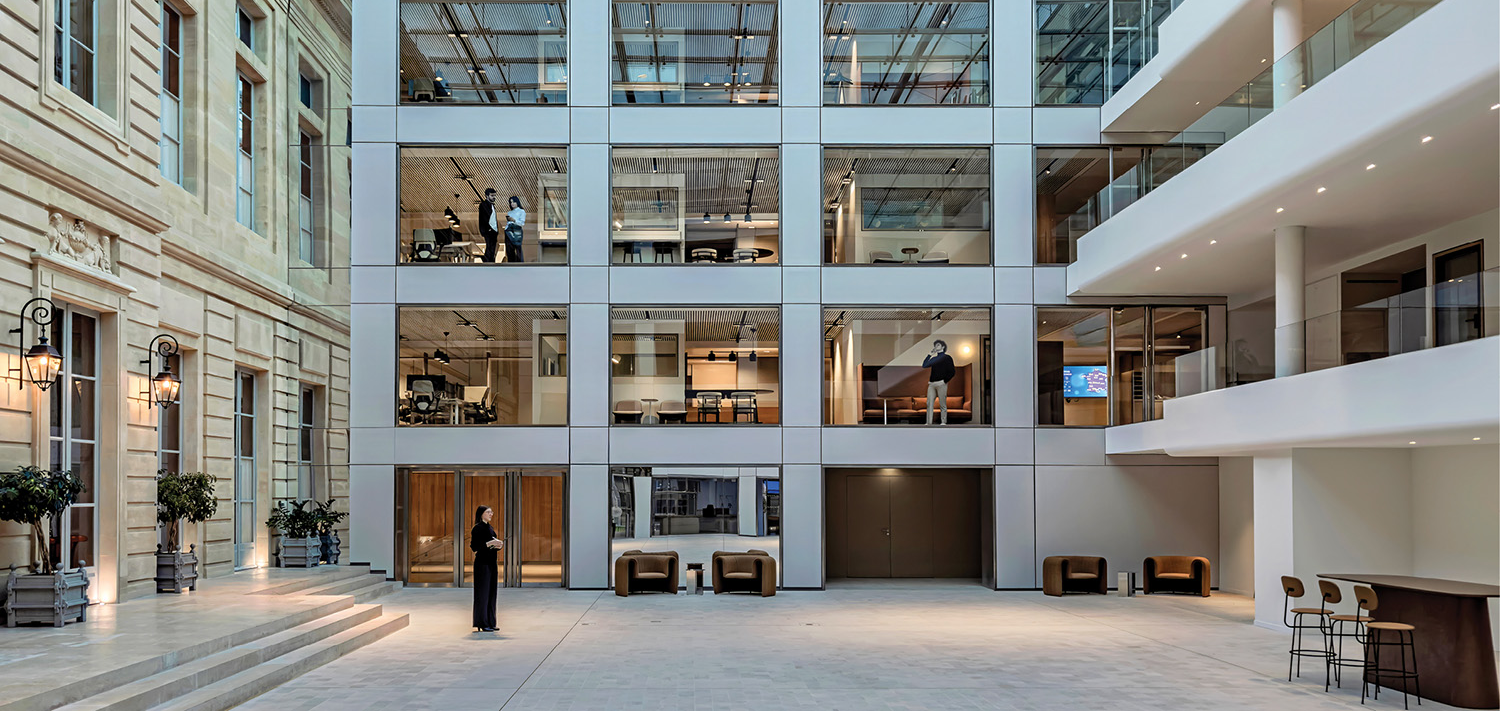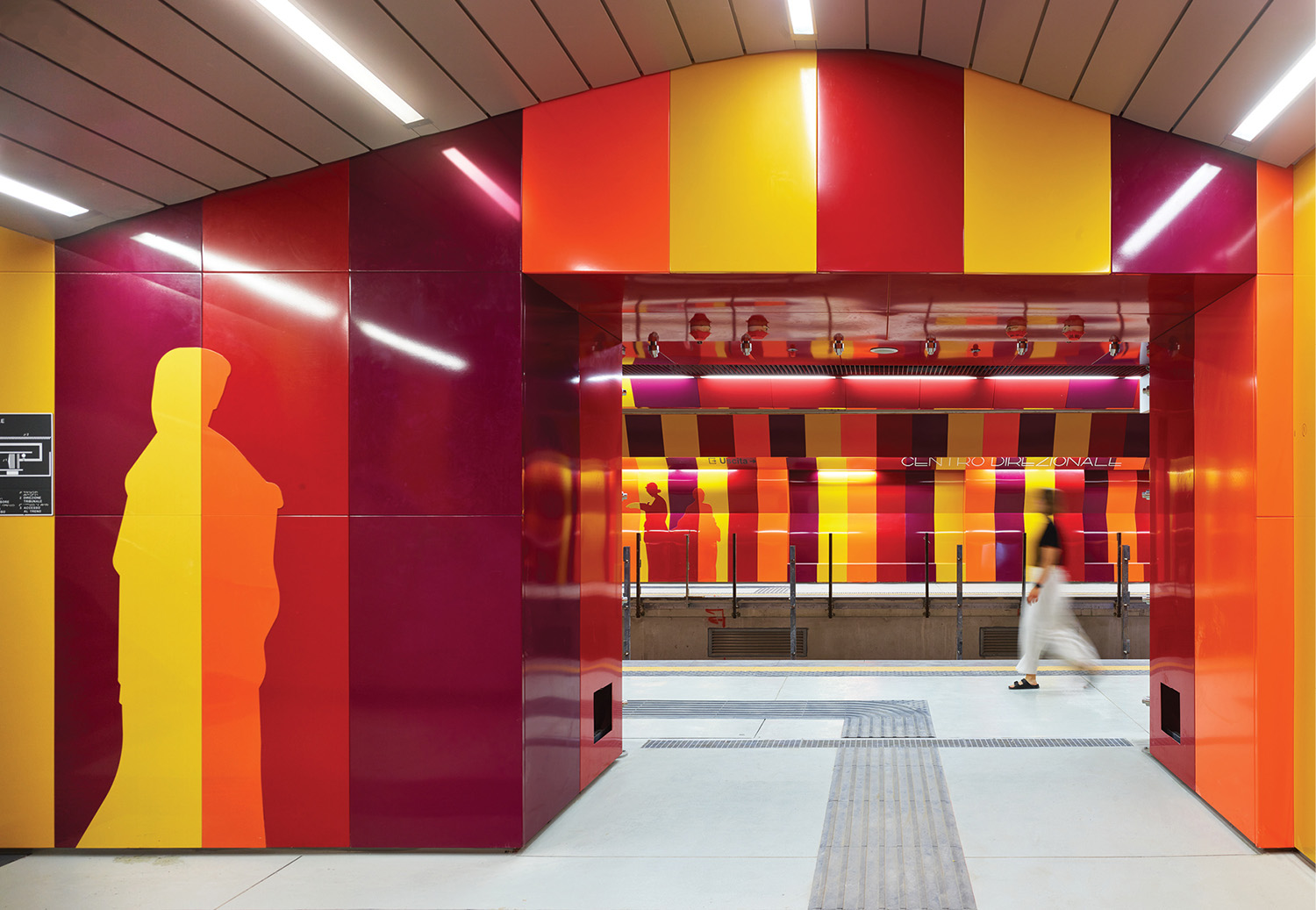Reflections on History: 3xN’s Copenhagen Studio Fills an 1845 Shipyard
For “Mind Your Behavior,” the Danish Architecture Center’s exhibition on built and unbuilt work by 3xN, the firm designed its own white faceted display platforms, like abstract icebergs. They now cluster in its reception area in Copenhagen, showing off an impressive selection of architectural models. Not just visitor eye candy, they’re also a key component of the practice—with a corner studio devoted to producing them.
“Models are fundamental to the way we work,” 3xN senior partner Kim Herforth Nielsen explains. And he should know. It’s been almost 30 years since he and two partners, who all coincidentally had the same last name, founded what was then called Nielsen, Nielsen and Nielsen.
“Even with all of the opportunities presented by digital modeling, physical forms are still so important to truly understand problems and find the best solutions,” Nielsen continues. “We start with study models, usually working with cardboard or foam, and then develop them into the larger presentation models you can see here. We must have hundreds of models—I can’t even guess how many.”
The effect is not of clutter, however, but of a gallery-like serenity with clean lines, white walls, and white furniture. “I think that people can sometimes be limited by their surroundings. To allow our work to be the defining feature, the space needed to be as simple as pos-sible,” Nielsen explains. “When we have the tools and the room to do more, we inevitably do. We see this as a workshop, a place to make things.”
Appropriately, the office’s building, completed in 1845, has always been a place to make things. The location, on a canal, is the first clue to what originally took place here: repairing gunboats for the Royal Danish Navy. Another clue is the tracked floor and its slight slope downward, allowing the vessels to slide out onto the water.
Landmark regulations have protected the exterior, with its horizontal rhythm of five connected gabled volumes. Nielsen insists that adapting a landmarked structure did not present more challenges than other projects: “Just different ones.” He also stresses that the beautiful old shell called for a less-is-more approach.
Inside, Nielsen removed dividers between the narrow volumes, long enough to hold two ships at once, in order to open up the 21,500 square feet. “The openness is perfect for our working style,” he says. “We had outgrown our previous location, where we had three separate levels.” Now, all 85 staff members can see and interact with one another.
Through the remaining skeleton of mellow pine, the history of the building asserts itself. “The structure actually contributes to the intimacy of the interior,” Nielsen says. Between the posts, he built two runs of freestanding glass-walled meeting and conference rooms, which allow for privacy without carving up the space.
Perhaps surprisingly for a firm with a portfolio of ultra-contemporary projects—notably the aluminum-shingled National Aquarium Denmark, aka the Blue Planet—he was not tempted to build an office from the ground up. “This shipyard building, this context, is ideal. It’s close to the city, for an easy commute for most people, and close to the Royal Danish Academy of Fine Arts’s school of architecture, whose students work in our model shop,” he explains. “And there’s the added convenience, for me, that it’s just a few minutes’ walk from my house, so it’s like my living room.”
Sunshine floods in through the long skylights and the window walls on the canal-facing side. “With the weather getting warmer, we can open the glass doors and eat lunch outside,” Nielsen says. “We’re also hosting casual Friday wine receptions on the water. I can imagine that pretty soon some of our staff members will be taking a dip before and after work!”
Nielsen often says, “Architecture creates behavior.” In this case, the office’s spatial organization conveys his egalitarian convictions: “Everyone, from senior designers down to interns, has valuable ideas to contribute to our projects and the life of the firm.” The competition team sits together, in the same volume as the model shop. In the adjacent volume is the project team. The communications department and administrative employees likewise cluster together. GxN, the office’s innovation arm, is right next to the materials library.
“We can all see one another and be inspired by what each group is doing,” Nielsen continues. “Our culture is not focused on hierarchy, so my fellow partners and I sit in the mix, with the staff, and are available to talk to everyone.” If they’re not out swimming.
Project Team: Bo Boje Larsen; Jan Ammundsen; Signe Blomquist; Jeppe Kingstad Hjort: 3Xn. Leif Larsen Ventilation: MEP. HK Byg Enterprise: General Contractor.


